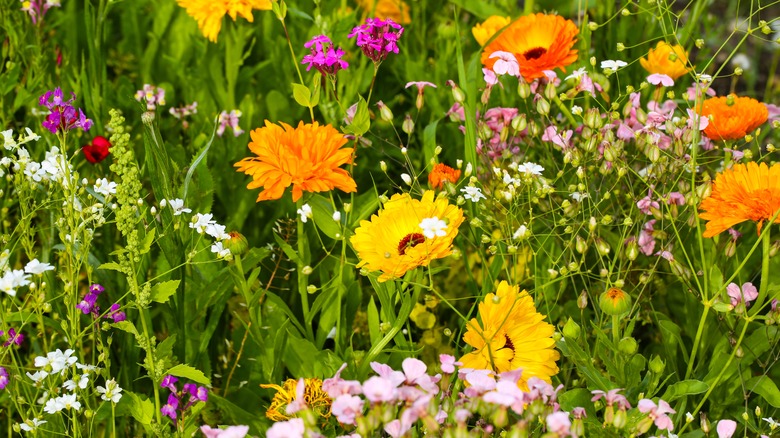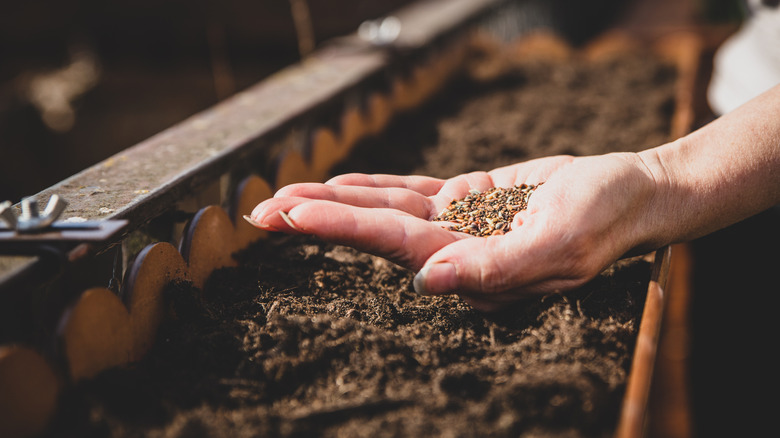The Smart Way To Add Stunning Wildflowers To Your Garden Without Losing Your Yard
There are plenty of good reasons to turn your lawn into a field of wildflowers: It's good for the environment and beautiful, too. But you may not want to fully get rid of your yard — perhaps you have kids and pets who play outdoors, host gatherings often, or just prefer a neatly manicured look. Whatever the reason, there's a way to compromise: a wildflower container garden.
Planting your wildflowers in containers allows you to sidestep many of the usual challenges associated with planting meadows. First, there's the yard space you lose. Many wildflowers also self-seed and spread rather aggressively on their own, so they could take over even if that wasn't the original plan. Additionally, between preparing the soil, reducing weeds, and other steps, it can take years to develop a thriving, well-established meadow. Wildflower patches can also look a bit, well, wild during certain times of the year, so they're not as ideal for those who like tidy outdoor spaces. By contrast, by planting in containers, you can skip the site preparation and contain your wildflowers to specific areas, while maintaining your yard's current size.
A potted "mini-meadow" also provides many of the same benefits as a traditional meadow. Wildflowers help support local pollinator populations, including bees, butterflies, moths, wasps, and birds, which are key species in ecosystems. Wildflowers also provide food, nesting sites, and habitat for other creatures. Then, of course, there are the gorgeous, colorful blooms they produce with very little maintenance.
How to start a mini-meadow in containers
Since you choose the soil for your potted meadow, you have a little more flexibility when choosing plants than in a garden bed. But it's still important to evaluate the other conditions in your yard before choosing containers and plants. Can you provide full sun, as many wildflowers require, or do you need flowers that will grow in partial shade? Do you live in a wet, humid climate or a dry one? What hardiness zone are you in? All of these questions will influence which colorful wildflowers you can grow in your garden and which container material will work best. For example, in wet regions, quick-drying containers such as terracotta are best.
Use deep (10 to 12 inches) and well-draining containers. Larger is better, because bigger containers can support more plants, and you will be able to more closely mimic a natural meadow with lots of plants growing densely in a small area. A well-draining potting mix is best; avoid those that retain moisture, and amend with coarse sand or perlite to improve drainage further.
You can either use a pre-made wildflower seed mix suited to your hardiness zone and sunlight level, or pick and choose which wildflower seeds to sow on your own. Use native plants when possible, with a focus on compact varieties that are well-suited to containers. Some common native wildflower selections include zinnias, coneflowers, asters, coreopsis, sunflowers, and goldenrod. Complement your wildflowers with native grasses for a fuller-looking container meadow.

